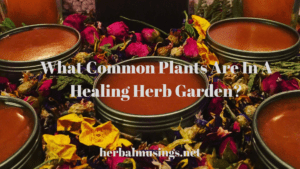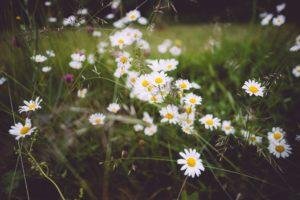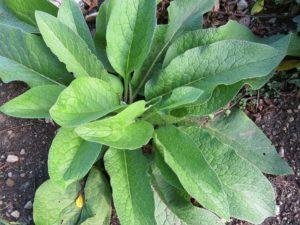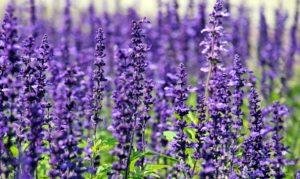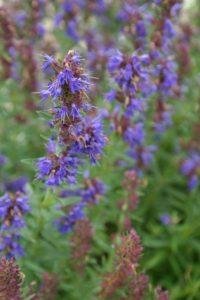It’s that time of year again when gardening catalogues start arriving in the mail and my thoughts turn to gardening. What herbs do I want to plant this year? What plants do I want to have in my healing garden?
Soon I’ll be starting the seeds indoors so I’ll have hardy plants to plant in my garden. Here is my list of plants I’ll have in my healing salve garden.
Healing Garden Herbs
German Chamomile (Chamomilla recutita) and Roman Chamomile (Chamaemelum nobile) are the two most common varieties. These aromatic herbaceous plants have white daisy like flowers and a scent reminiscent of apples or pineapple. Although the dried flowers are commonly used as tea for sleep there are many other health benefits of chamomile tea including its ability to protect the skin, lower stress levels and soothe menstrual symptoms. It also boosts the immune system, treats gastrointestinal issues and manages diabetes.
Chamomile salve has so many uses, it’s a universal save! Here are some uses for the salve; diaper cream, sunburns, eczema, scrapes and bruises, razor burn, chapped lips, cuticle cream just about any kind of skin condition benefits from this salve.
Calendula (Calendula officinalis) also known as the pot marigold, have beautiful bright yellow flowers that are not only medicinal but also edible! This plant is highly favored for its skin healing properties. It is also excellent for sensitive skin, making it perfect for using with babies and children. If you apply this flower oil or salve to your cuts, scrapes, bruises and insect bites, you can quickly speed the healing process, due to the anti-inflammatory properties of the oil and to the unique antioxidant compounds found in this miraculous plant. By protecting against infections it keeps wounds and scrapes safe, allowing them to heal rapidly. The salve is very beneficial in healing dry, cracked skin.
Peppermint (Mentha piperita) is a hardy perennial herb that is a hybrid of water mint and spearmint. Mints are very invasive and can take over your entire garden. I plant mints in a large deep bucket buried in the ground. A highly versatile herb long used to flavor sweets, toothpaste and mouthwashes among other things. Peppermint is useful as a treatment for indigestion, irritable bowel syndrome, coughs and headaches. Taken as a tea after meals improves digestion. A cup of peppermint tea can help alleviate a headache or stomach ache. Sprinkle peppermint leaves in the back of your cabinets, it helps deter ants and mice. Used as a salve, peppermint alleviates muscle and nerve pain.
I make and sell a wonderful peppermint and pine headache salve that makes your headache disappear in minutes. You can find my headache salve in my Etsy shop.
Comfrey (Symphytum uplandica x) also known as knitbone with blue, pink or purple flowers is the cultivated comfrey, the one gardeners and herbalists use. The x means its a hybrid grown in the garden and has tall flowering stalks. The leaves are free of PAs that can damage the liver. The root contains the PAs so don’t use it. Wild comfrey (Symphytum officinale) is a small plant with yellow flowers that we don’t use. The wild comfrey root and the leaves contain PAs which are poisons.
Comfrey strengthens bones and mends broken ones, its also used to treat wounds and reduce inflammation from sprains and broken bones. A poultice made from the leaves and wrapped around the broken bone will speed up healing. Comfrey contains allantoin which helps cells grow faster which is why it can heal any injury quickly and thoroughly. Drinking comfrey infusion 2x a week will keep your bones strong and help avoid osteoporosis.
Besides bones it helps heal and strengthen the respiratory tract, digestion, skin, hemorrhoids and lungs. This powerhouse herb also relieves pain and swelling from arthritis. Comfrey is rich in vitamin B12, which is important to vegetarians, as very few plants have B12. It is also rich in vitamins B1, B2, C, E, A and pantothenic acid plus calcium, iron, manganese and phosphorus. I drink the infusion regularly and make a salve from the leaves.
Lavender (Lavandula angustifolia) its scent is famous for relaxation and sleep. Just smelling lavender plants as you walk by them is relaxing. I love brushing my hand over the flowers and releasing the scent. It smells so good! Plants bloom from June to September and the flowers are arranged in spirals of 6 to 10 blossoms perched atop spikes above the foliage. A salve made with the flowers which are antibacterial and antiviral is applied topically to treat fungal infections, wounds, eczema, varicose ulcers, sunburned skin and acne.
Lavender spray can be sprayed on pillows or in the air to aid in sleeping and relaxation. A lavender oil and tea tree oil combination repels many annoying bugs such as mosquitoes & gnats. This is a great spray to take with you when you’re in the great outdoors. If you suffer from hair loss or any other condition that affects the quality of your hair, you can steep lavender flowers like a tea and then apply the mixture to your hair. This will function as an effective shampoo and significantly boost the health of your follicle beds and hair.
Hyssop (Hyssopus officinalis) flowers from June through October with purple-blue colored flowers that are very fragrant and attract nectar-drinking insects. Some cultivars have white or pink-colored flowers. Hyssop is an expectorant, antibacterial and antiviral herb commonly used to treat respiratory conditions such as influenza, sinus infections, colds and bronchitis. It is also a nervine and is used to calm anxiety.
Hyssop oil is diffused in a sickroom to help control germs and clear the air. Hyssop treats burns and bruises. The herbs bitter principle, marrubin, contributes to its use as a digestive stimulant. The plant helps to break up respiratory mucus. Once broken up the mucus is easier to cough up, making the person taking it much more comfortable. Hyssop is soothing, helping to relieve the pain of a sore throat when used as a gargle. Drink hyssop tea several times a day for relief.
Marshmallow (Althaea officinalis) easily grows in gardens, it can grow to be about 4 feet tall. The marshmallow has lovely pale pink flowers. They bloom in late summer around August and September. Marshmallow helps to ease sore throats and dry coughs.
The leaves and roots contain polysaccharides which have antitussive, mucilaginous and antibacterial properties. Because of this marshmallow has a soothing effect on inflamed membranes in the mouth and throat when ingested. The antitussive properties help reduce dry coughing and prevent further irritation.
Marshmallow also treats heartburn, indigestion, ulcerative colitis, stomach ulcers and Crohn’s disease when taken as a tea. This is because of marshmallows mucilaginous properties, it coats the lining of your throat, stomach and intestinal tract.
A great way to consume marshmallow is to add about one tablespoon of dried marshmallow root or leaves to a cup of cold water. Cover it with a lid. Wait a few hours or preferably until the next day then strain. Marshmallow is always made using a cold infusion. Do not add hot water to marshmallow root.
With only a few plants in your healing garden, you have a multitude of healing options that cover a wide variety of ailments. Would you make salves from these plants to add to your herbal medicine chest?
What plants do you plan on growing in your herbal healing garden?
This post may contain affiliate/referral links. Read my full Disclosure/Disclaimer Policy.
